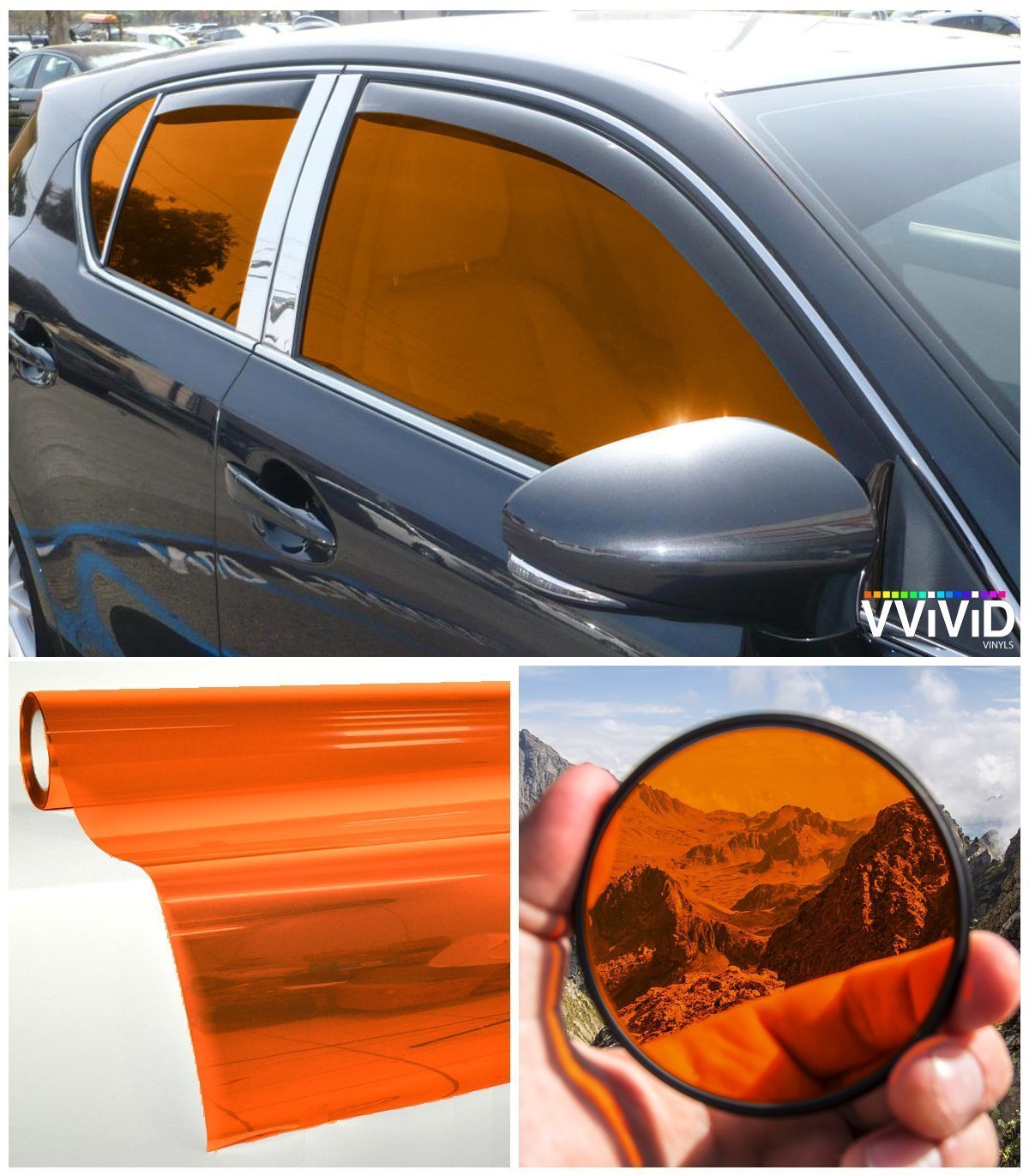Whatever You Required to Find Out About Auto Window Tinting for Your Vehicle
Auto window tinting is a functional enhancement for lots of automobile owners. It supplies advantages such as raised convenience and power effectiveness. Various color movies accommodate different needs and choices. Understanding lawful guidelines and choosing the right color percentage is vital. The setup process and appropriate upkeep additionally play substantial duties in making certain the durability of the tint. What various other elements should one consider before making a choice on window tinting?
Benefits of Vehicle Window Tinting
Although some vehicle owners might neglect it, vehicle home window tinting offers various benefits that improve both the driving experience and the vehicle's longevity. Among the primary advantages is the decrease of warmth buildup inside the car, enabling for a much more comfy adventure, specifically during hot weather condition. This can cause lowered dependence on air conditioning, enhancing gas efficiency.Additionally, window tinting gives defense against hazardous UV rays, which can trigger skin damage and discolor indoor products with time. By blocking these rays, the color assists preserve the lorry's interior and keep its resale value.Moreover, tinted home windows can boost personal privacy and safety and security, as they make it a lot more challenging for outsiders to see inside the car. This added layer of protection can deter potential theft. Generally, car window tinting works as a practical financial investment that adds to the automobile and both comfort's overall health.
Kinds Of Window Color Films
When thinking about car window tinting, lorry proprietors come across a range of window tint films, each designed to satisfy specific requirements and preferences. The first group is dyed home window film, which supplies a fundamental level of personal privacy and UV security while being economical. Next, metalized movies incorporate tiny metal particles, mirroring heat and boosting toughness, although they may hinder electronic signals.Ceramic movies are another alternative, known for their premium heat denial and clarity, supplying high performance without signal interference. Hybrid movies integrate features of dyed and metalized films, striking an equilibrium in between cost and performance. Each kind of window tint movie offers distinct advantages, enabling lorry proprietors to choose based upon their details demands, such as warmth spending plan, appearance, and control considerations. Understanding these choices is vital for making a notified choice pertaining to auto window tinting.
Comprehending Legal Laws
When thinking about automobile home window tinting, it is vital to recognize the legal guidelines that regulate tint darkness limitations and windshield tint requirements. These laws can differ substantially from one state to another, impacting what is acceptable for automobile owners. Familiarizing oneself with these legislations warranties conformity and assists stay clear of potential fines or fines.
Color Darkness Limitations
How can lorry proprietors assure they continue to be certified with regional legislations concerning window tinting? Understanding color darkness limitations is necessary. Each state has certain policies that dictate the permitted levels of darkness for window colors, which are determined by Visible Light Transmission (VLT) percentages. Commonly, front-side windows should permit a greater percentage of light contrasted to rear home windows. For circumstances, some states may enable only 30% VLT for front home windows, while the rear home windows could be allowed to have significantly darker colors. To assure conformity, vehicle proprietors must seek advice from state standards or local legislation enforcement for precise details. In addition, certified tinting specialists can offer understandings concerning legal limitations, ensuring that car proprietors make informed choices.
Windshield Tint Laws

State-Specific Legislations
Steering via the landscape of state-specific regulations regarding vehicle home window tinting calls for careful attention to information, as guidelines can differ substantially from one state to another. Each state has its own set of guidelines controling allowed tint percents, kinds of materials, and positioning on automobile windows. For circumstances, some states allow darker tints on rear home windows while forbiding them on front home windows, while others have stricter total restrictions. Furthermore, certain states mandate using specific materials or call for accreditation from installers. Failing to comply with these policies can result in fines or the need to remove non-compliant tint. Vehicle proprietors need to consult their state's Department of Motor Autos or pertinent authority to guarantee adherence to local legislations.
Picking the Right Tint Portion
When choosing the appropriate color percentage for a car's windows, one need to take into consideration different elements that affect both aesthetic appeals and performance. Tint percents commonly range from 5% to 70%, with reduced percentages providing darker shades and higher percentages allowing more light in. A darker color can enhance privacy and decrease glare, while a lighter tint can maintain visibility and comply with legal restrictions.Furthermore, individual choice plays a significant duty in this choice. Some people may choose the smooth look of darker colors, while others may favor a much more open, ventilated feeling. Furthermore, the car's purpose should be thought about; as an example, those utilizing their vehicles for business objectives may choose lighter tints to maintain an expert look.Ultimately, the appropriate color percentage balances personal design, convenience, and adherence to neighborhood guidelines, ensuring a rewarding tinting experience.
The Setup Process
A successful installation of window tint requires cautious focus to detail and the right tools. The procedure generally starts with thorough cleaning of the home windows to remove dirt, dust, and particles, ensuring correct attachment of the film. When the surface areas are prepared, the installer measures and cuts the tint movie to fit each home window accurately.Next, the movie is positioned on the glass, typically utilizing a solution to help with very easy modification and prevent air bubbles. Warm is sometimes related to the movie to conform it to the window's contours, improving its look and longevity. After validating a smooth fit, the installer diligently cuts any type visit this site right here of excess film along the edges.Finally, the installer look for flaws and verifies all edges are safe and secure. This careful strategy is essential not have a peek here just for aesthetic appeals however also for achieving the wanted efficiency advantages of home window tinting, such as UV protection and heat decrease.
Upkeep and Care for Tinted Windows
Proper upkeep and treatment are necessary for protecting the integrity of colored windows. Reliable cleansing techniques, the evasion of unsafe chemicals, and routine evaluations for damage play crucial roles in ensuring long life. By complying with these guidelines, lorry owners can preserve the aesthetic and useful benefits of their window tint.
Cleaning Methods for Tint
Preserving the quality and longevity of tinted windows needs details cleansing strategies tailored to the film's fragile surface area. It is important to use a soft microfiber cloth to prevent damaging the color while cleansing. A gentle service of water and a couple of decreases of moderate recipe soap can efficiently eliminate dust and crud. It is recommended to apply the cleansing solution to the fabric, instead than directly onto the tinted surface area, to avoid wetness from leaking right into the edges of the film. Gentle, round activities should be utilized to cleanse the home windows extensively. Regular cleaning aids preserve presence and prevents buildup, making certain that the color continues to be in prime condition in time. Complying with these methods will certainly expand the life of colored home windows.
Staying Clear Of Damaging Chemicals
Although many home cleaning products are efficient on numerous surface areas, they can pose significant risks to tinted windows. Chemicals such as ammonia, bleach, and particular solvents can deteriorate the color movie, bring about staining and peeling. People must go with pH-balanced cleaners specifically designed for tinted windows. Additionally, using soft microfiber towels will certainly assist avoid scratches and maintain the color's stability. Regular upkeep is crucial; as a result, preventing severe scrubbing or unpleasant products is crucial. It is suggested to read item labels thoroughly to verify compatibility with home window tints. By selecting the ideal cleaning services and devices, car proprietors can protect the look and performance of their tinted directory home windows, guaranteeing a longer life expectancy and height efficiency.
Inspecting for Damages
Normal examinations of colored home windows are essential for recognizing any type of indicators of damages that might compromise their efficiency and appearance. Proprietors need to search for gurgling, peeling, or discoloration, as these issues can show poor installation or direct exposure to unsafe aspects. It is advisable to inspect the sides of the film where peeling may examine and start for any type of scrapes that can affect exposure. In addition, ultraviolet (UV) rays can cause the color to deteriorate gradually, so monitoring its performance in obstructing UV light is crucial. If any type of damages is spotted, timely activity needs to be taken, which might consist of expert fixing or replacement. Maintaining tinted windows not only improves aesthetic appeals yet additionally guarantees proceeded defense for both passengers and the vehicle interior.
Typical Misconceptions Concerning Home Window Tinting
What misunderstandings surround window tinting for cars? Several individuals believe that all home window colors are prohibited, but regulations differ by state, permitting for details degrees of tinting. One more typical myth is that darker tints block even more warmth; nonetheless, the performance of window films depends on their technology instead than darkness. Some people also think that home window tinting is only for aesthetics, neglecting its benefits, such as UV defense and glow decrease. In addition, lots of assume that home window tinting will certainly damage their vehicle's glass, yet properly applied colors can actually boost glass durability. There is an idea that window tints obstruct visibility, yet top quality films are made to maintain clear sightlines while supplying privacy. Understanding these myths aids consumers make educated decisions concerning home window tinting, ensuring they appreciate the complete range of advantages it offers.
Often Asked Inquiries
How Much Time Does Window Tinting Usually Last?
The long life of window tinting varies based upon factors such as installment quality, film kind, and ecological conditions. Usually, high-quality tint can last anywhere from 5 to ten years before needing substitute or reapplication.
Can I Remove Home Window Tint Myself?
Eliminating home window color oneself is possible, though it may be difficult. People need to utilize a warm source and sticky eliminator to ease the process, however care is suggested to avoid damaging the automobile's glass or inside.
What Devices Are Required for DIY Home Window Tinting?

Will Window Tinting Damage My Car's Glass?
Home window tinting, when used appropriately, normally does not harm an auto's glass. Nonetheless, inappropriate installation or low-grade movies may lead to peeling off, bubbling, or scratching, potentially jeopardizing the integrity of the glass with time.
Can Tinted Windows Influence My Car's Resale Worth?
The effect of colored windows on a lorry's resale value can differ. While some purchasers value the added personal privacy and UV security, others might view it as a possible issue, possibly affecting resale favorably or adversely. When taking into consideration automobile home window tinting, car owners run into a variety of window tint movies, each created to fulfill certain needs and choices. When taking into consideration automobile home window tinting, it is essential to recognize the lawful laws that control color darkness limitations and windscreen color requirements. Generally, front-side home windows have to allow a higher portion of light contrasted to rear windows. Some states may enable just 30% VLT for front home windows, while the rear windows may be allowed to have notably darker tints. Some states permit darker tints on rear home windows while forbiding them on front home windows, while others have more stringent total limits.